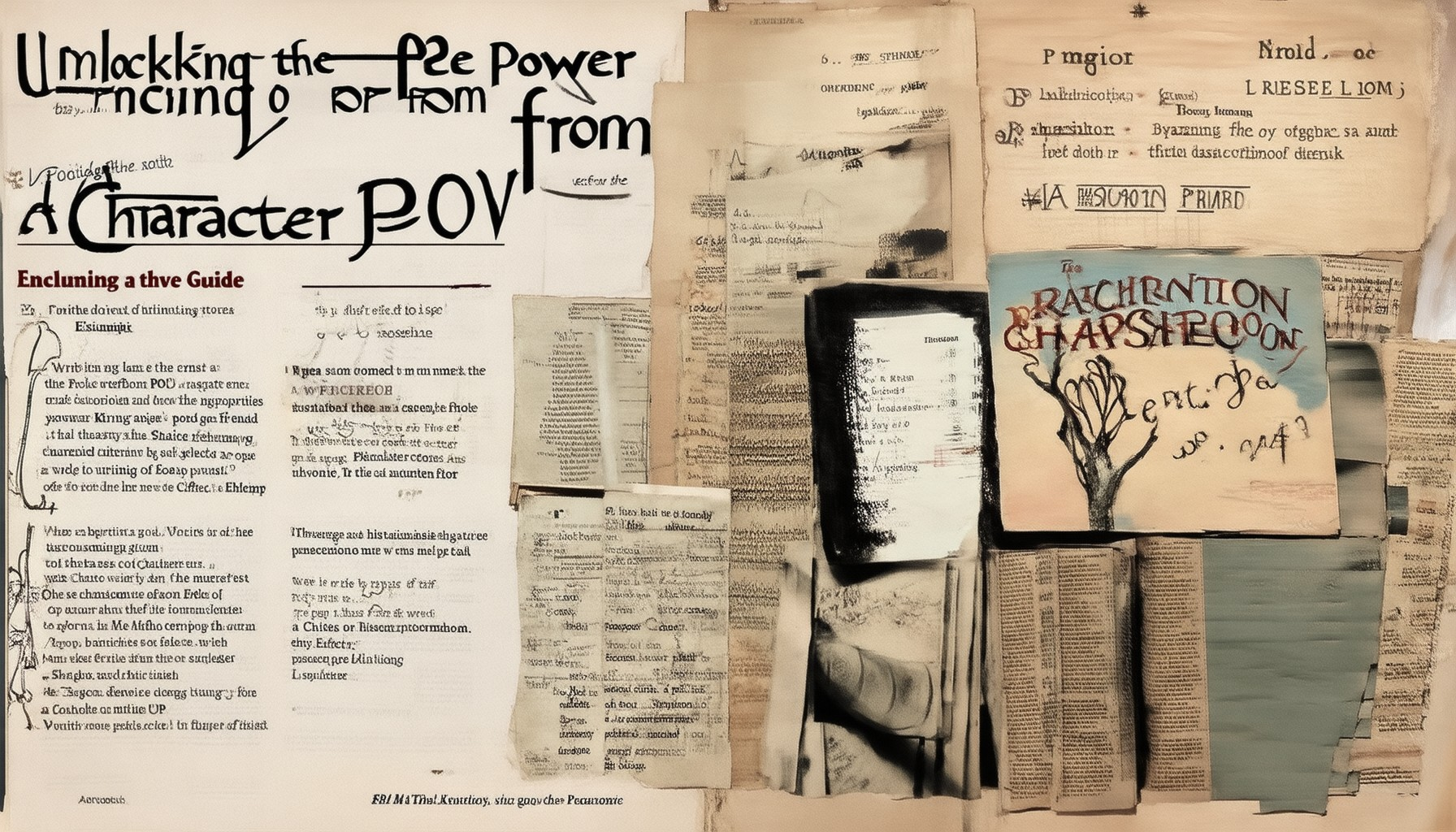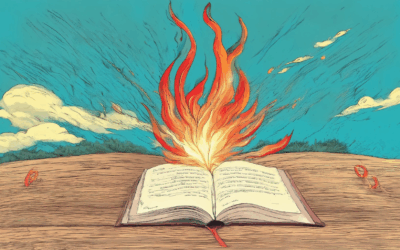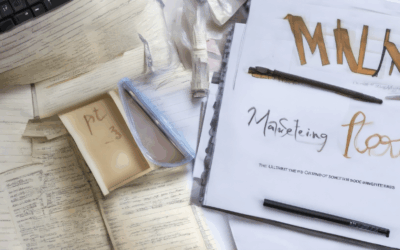Writing from a character’s point of view is a powerful technique that allows authors to immerse readers deeply into their stories, offering unique perspectives and insights. Whether crafting a first-person narrative or a third-person limited perspective, mastering this method enhances engagement and adds layers of meaning to your work. In this comprehensive guide, we’ll explore the intricacies of writing from a character’s POV, examine real-world examples, and delve into the fascinating concept of the Rashomon effect, which challenges our understanding of truth in storytelling. By the end of this exploration, you’ll gain valuable insights into how to craft compelling narratives that resonate with readers long after the final page.
Key Takeaways
– Understanding Multi-Perspective Narratives: Crafting stories from various viewpoints enriches plot depth and character complexity.
– Enhancing Storytelling Through Multiple Viewpoints: This technique reveals hidden motivations and emotions, creating more engaging narratives.
– Examples of Successful Multi-Perspective Stories: Books like The Kite Runner and Beloved illustrate the power of varied perspectives.
– Exploring Characters’ Inner Worlds: Retelling stories from different characters’ POVs offers fresh insights and emotional depth.
– The Rashomon Effect in Literature: This phenomenon highlights how subjective experiences can lead to conflicting narratives, challenging notions of truth.
– Benefits for Readers and Writers: Engaging narratives and creative exploration of perspectives are key advantages for both readers and writers.
– Effective Retelling Examples: Reimagining classic tales, like Pride and Prejudice from Mr. Darcy’s POV, adds layers to familiar stories.
– Resources for Mastering Technique: Platforms like JamesWhitfieldThomson.com and others provide tools for writers to excel in narrative voice.

Writing from a Character’s Perspective
To effectively write from a character’s perspective, follow these structured guidelines:
- Character Selection : Choose a character whose story you know well or with whom you have a strong emotional connection. Consider their background, experiences, and personality traits to ensure authenticity.
- Narrative Voice : Determine the tone and style of the narrative. Is the character introspective, sharing deep thoughts, or more action-oriented? This decision will shape the narrative’s direction.
- Internal Monologue : Use internal monologue sparingly to avoid overwhelming the reader. Sprinkle thoughts throughout scenes to reveal character depth without info-dumping.
- Actions and Dialogues : Reflect the character’s personality and situation through their actions and dialogues. Descriptions of actions can highlight emotions and motivations.
- Descriptive Language : Employ sensory details to immerse the reader in the moment, indirectly conveying the character’s feelings. Balance description to avoid overwhelming the narrative.
- Consistency : Maintain a steady voice, aligning thoughts, actions, and descriptions with established traits. A shy character might exhibit self-criticism, while a confident one might be assertive.
- Pacing : Adjust the narrative’s speed based on the character’s emotional state. Intense moments may require a faster pace, while slower moments allow for reflection.
- Past Influences : Integrate past experiences subtly, using flashbacks or memories to add depth without info-dumping. Show how past events shape current feelings and decisions.
- Conflict Handling : Highlight character growth by addressing challenges or conflicts. This showcases strengths and vulnerabilities under pressure.
- Audience Connection : Aim to make readers feel inside the character’s mind, understanding motivations and emotions on a deeper level.
By organizing these elements thoughtfully, you can create a narrative that immerses readers in the character’s experience, capturing their essence vividly.
What is a Character’s Point of View?
A character’s point of view refers to the perspective from which a story is narrated or experienced. It determines how readers perceive the plot, characters, and events unfolding in the narrative. The point of view can significantly influence the tone, pacing, and depth of the story.
Types of Narrative Perspectives:
- First-Person: The story is told from “I” or “me” perspective, allowing readers to experience the narrative through the character’s direct thoughts and feelings. This creates intimacy and immediacy.
- Second-Person: Less common, this perspective uses “you” to address the reader, often for experimental or artistic effects, as seen in works like Raymond Carver’s “A Small Place.”
- Third-Person Limited: The narrative focuses on one character’s thoughts, feelings, and actions while providing limited insight into the minds of others. This offers a balance between broad storytelling and deep characterization.
- Third-Person Omniscient: The narrator knows and reveals the thoughts, feelings, and actions of all characters, providing a comprehensive view of the story and its world.
Importance of Point of View:
- Emotional Connection: A consistent point of view allows readers to empathize with characters and understand their motivations.
- Storytelling Style: It shapes the narrative’s pace, focus, and how events are presented.
- Information Delivery: The point of view dictates what information is revealed and how it is shared with readers.
Authorial Choice:
Authors carefully select the point of view to suit their storytelling goals. For instance, F. Scott Fitzgerald uses first-person in The Great Gatsby to deepen the emotional resonance, while Harper Lee employs third-person limited in To Kill a Mockingbird to explore Scout Finch’s coming-of-age journey.
By thoughtfully choosing and executing a point of view, writers can craft narratives that resonate deeply with readers, offering unique insights into the characters’ lives and worlds.

Understanding Perspective in Writing
Writing from someone’s perspective involves adopting a narrative voice that reflects the character’s thoughts, emotions, and experiences. This technique allows readers to connect deeply with the characters and the story being told. Here’s a breakdown of the different perspectives and their implications:
First-Person Perspective
- Definition : The story is told from “I” or “me” point of view, allowing the narrator to speak directly to the reader.
- Examples : Memoirs, personal journals, and intimate stories benefit from this perspective, creating a sense of immediacy and personal connection.
Second-Person Perspective
- Definition : Uses “you” to address the reader, often leading to interactive narratives.
- Examples : Used effectively in games or interactive books where reader choices influence the plot.
Third-Person Perspective
- Types :
- Limited Omniscient : The narrator knows some characters’ thoughts and feelings but not all, offering a partial view.
- Omnipotent : The narrator knows everything about all characters, providing a broad narrative perspective.
- Examples : Novels like “To Kill a Mockingbird” employ third-person limited to focus on specific characters’ internal lives.
Choosing the Right Perspective
- Advantages : Each perspective suits different storytelling goals. First-person builds intimacy, second-person enhances interactivity, and third-person offers flexibility in character portrayal.
- Considerations : Balancing the chosen perspective with plot complexity and character depth is crucial to avoid info-dumping or losing reader engagement.
By thoughtfully selecting the narrative perspective, writers can craft stories that resonate emotionally with readers, whether through personal anecdotes, interactive tales, or richly layered worlds. This understanding aids in making informed decisions about storytelling, enhancing both reader engagement and SEO performance through clear, well-structured content.

What Is It Called When a Book Is Written from Different Perspectives?
A book written from different perspectives is often referred to as a “multi-perspective narrative” or “polyperspectivity.” This storytelling technique involves presenting the same events or storylines through the eyes of multiple characters or viewpoints, allowing readers to experience the narrative from various angles. This approach enhances the depth and complexity of the story, providing a broader understanding of the plot and characters.
Examples of this technique include books like The Kite Runner by Khaled Hosseini, which alternates between the protagonist’s perspective and that of other significant characters, offering a multifaceted view of the story. Another example is Beloved by Toni Morrison, which employs a fragmented narrative structure to explore the perspectives of different characters involved in the same events.
This narrative style is particularly effective in conveying complex themes, moral dilemmas, and intricate character dynamics, making it a popular choice among authors seeking to enrich their storytelling.
What is Retelling a Story from Another Character’s Perspective?
Retelling a story from another character’s perspective involves reimagining the narrative through the eyes of a different character, allowing for fresh insights, emotional depth, and unique storytelling angles. This technique can breathe life into familiar plots and offer readers a new way to connect with the story.
Why Retell Stories?
- Exploring Multiple Perspectives: By shifting the viewpoint, authors can uncover hidden motivations, emotions, and experiences that weren’t apparent in the original version.
- Adding Depth and Complexity: Retelling a story from a new angle often reveals unexpected twists, moral dilemmas, or character growth that enriches the narrative.
- Providing Fresh Insights: Readers may gain new appreciation for characters, plotlines, and themes when viewed through a different lens.
Examples of Effective Retelling
One famous example is Pride and Prejudice reimagined from Mr. Darcy’s perspective, offering a glimpse into his thoughts and feelings during the iconic courtship scene. This approach allows readers to understand his motivations and emotional struggles in a way that adds layers to the original story.
Benefits for Readers and Writers
For readers, retelling stories from different perspectives can enhance engagement and empathy. For writers, it offers a creative challenge to explore characters and narratives in innovative ways.
James Whitfield Thomson’s platform, JamesWhitfieldThomson.com , provides valuable insights into mastering this technique, including tips on balancing established plotpoints with new character perspectives. Their resources are particularly useful for aspiring authors looking to experiment with narrative voice.
Competitors like Inkitt and Writing.com also offer tools and communities for writers to explore retelling stories from different perspectives. These platforms highlight the versatility of storytelling and its ability to captivate audiences in novel ways.

Rashomon Effect in Literature
The Rashomon effect refers to the phenomenon where multiple participants of an event perceive it differently due to individual biases, memory distortions, or subjective interpretations. This concept is often associated with the 1950 Japanese film Rashomon , directed by Akira Kurosawa, which depicts four distinct versions of a violent incident told by different characters. The Rashomon effect highlights how subjective experiences and personal agendas can lead to conflicting narratives of the same event.
In literature, the Rashomon effect is frequently used to explore themes of perception, truth, and relativism. Authors employ this concept to demonstrate how reality can be shaped by individual perspectives, making it difficult to establish a definitive version of events. This technique challenges readers to question the objectivity of truth and recognize the influence of personal bias on historical recountings.
Examples of the Rashomon effect in literature can be found in works that feature multiple narrators or fragmented timelines. For instance, William Faulkner’s *As I Lay Dying* uses varying perspectives to depict the same family tragedy, illustrating how different characters’ viewpoints can conflict significantly. Similarly, Gabriel García Márquez’s *One Hundred Years of Solitude* explores overlapping stories that reflect the complexities of human memory and perception.
The Rashomon effect also raises broader implications for understanding historical and cultural narratives. It underscores the idea that history is not a single, immutable truth but rather a collection of interconnected, often contradictory stories. This perspective has significant applications in fields ranging from history to philosophy, urging us to approach narratives with skepticism and an awareness of their subjective nature.
Ultimately, the Rashomon effect serves as a powerful metaphor for the fluidity of truth and the diversity of human experience. By embracing this concept, literature invites readers to engage with the multifaceted nature of reality and consider the ways in which personal and cultural biases shape our understanding of the world around us.





0 Comments